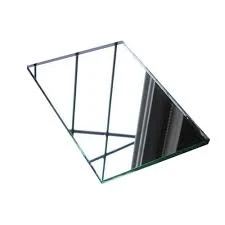

The Elegance and Functionality of Mirror Pane Glass
Mirror pane glass is an exquisite material that combines aesthetic appeal with practical functionality. This versatile glass type has found its place in various applications, from residential interiors to commercial designs, revolutionizing the way we perceive spaces. With a unique ability to reflect light and amplify surroundings, mirror pane glass serves as both a design element and a practical solution.
One of the most notable features of mirror pane glass is its ability to create an illusion of space. In smaller rooms, using mirror pane glass strategically can help make the area appear larger and more open. By reflecting light and surrounding colors, this glass creates depth and dimension, which is particularly beneficial in urban settings where lofts and apartments may be confined in size. Designers often utilize mirrored walls, ceilings, or furniture to enhance the spatial qualities of a room, making it feel airy and expansive.
In addition to creating the illusion of space, mirror pane glass plays a pivotal role in lighting. Natural light is a coveted element in any design, and mirror pane glass can amplify it. When placed opposite windows or light sources, it captures and reflects light throughout the room, reducing the need for additional artificial lighting during the day. This not only creates a bright and inviting atmosphere but also contributes to energy efficiency, making spaces more sustainable.
The aesthetic appeal of mirror pane glass cannot be overstated. Its sleek, modern appearance adds a touch of elegance to any design. Whether it’s a minimalist bathroom, a chic living room, or a sophisticated office, mirror pane glass seamlessly integrates into various styles, from contemporary and industrial to traditional. The reflective quality offers a unique visual dynamic, allowing for creative expressions in color, texture, and form. Interior designers often pair it with bold colors or textured materials to create striking contrasts that enhance the overall decor.

Beyond aesthetics, mirror pane glass is a practical choice for safety and durability. Unlike traditional mirrors that can break easily, modern mirror pane glass is often treated to enhance its strength and resilience. This makes it suitable for high-traffic areas, where durability is essential. Additionally, many varieties of mirror pane glass are specially coated to resist tarnishing and scratching, ensuring that the surface maintains its shine over time.
Moreover, technology has played a significant role in the evolution of mirror pane glass. Advanced manufacturing processes have allowed for the creation of smart mirror solutions, integrating touch display technology that enables mirrors to serve multifunctional purposes. These smart mirrors can display information, control lighting, or even connect to other smart home devices, bridging the gap between aesthetics and technology.
Another exciting application of mirror pane glass is in exterior design. Glass facades adorned with reflective surfaces can transform commercial buildings, enhancing their architectural appeal while also improving energy efficiency. By reflecting surrounding environments, mirror pane glass can help structures harmonize with their settings, making urban landscapes more visually dynamic.
In conclusion, mirror pane glass is a remarkable material that offers both beauty and practicality. Its ability to create the illusion of space, enhance natural light, and integrate seamlessly into diverse design styles makes it a highly sought-after choice in modern architecture and interior design. As technology continues to innovate, the applications and potential of mirror pane glass will only expand, solidifying its role as an essential element in creating stylish and functional spaces. Whether used in residential homes or commercial buildings, mirror pane glass stands as a testament to the power of design in shaping our environments.